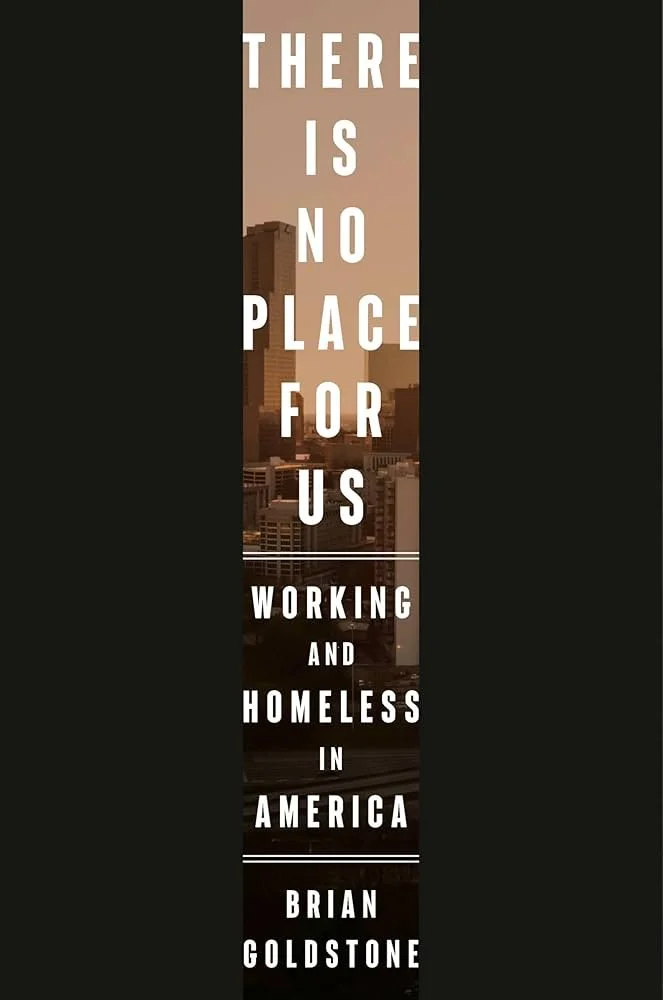“There is No Place for Us: Working and Homeless in America”
By Brian Goldstone
$30.00
Crown Publishing Group
448 pages
Developer’s Greed Equals Homelessness
by Fran Withrow 08.2025
Many people think the homeless are also the jobless. But the truth is there are many folks working one or more jobs who still struggle to obtain housing.
Brian Goldstone follows five families living in Atlanta, Georgia who are trying to remain housed in an area where rents are increasing rapidly. “There is No Place for Us” is Goldstone’s revealing expose of the plight of these people, and it is a sobering read.
Britt and her kids live with her great-grandmother, and she rides a bus to her job at an airport restaurant. She has applied for a housing voucher from the Atlanta Housing Authority, and is on the wait list. The year she applies, there are also 113,000 other people seeking housing vouchers.
Kara is pregnant with her fourth child and cleans Grady Memorial Hospital at night. Her job is not through the hospital but through a private, non-profit company. She does not have health insurance.
Maurice and his wife Natalia both have jobs: Natalia works for State Farm and Maurice at Enterprise Rent-A Car. They live in a condo and are diligent with their rent payments, fearful of eviction. But when the landlord decides to sell the condo, their lives are completely upended.
Michelle and her three children live with her fiancé in a three-bedroom unit. She is not aware that he has stopped paying rent until they are suddenly evicted. Where can she go?
Celeste and her children live in Efficiency Lodge, and she must clean her room herself before she is allowed to rent it. Celeste moves to Efficiency after an arsonist burns down her house.
Gentrification and the greed of real estate developers are just two reasons affordable housing is dwindling alarmingly. An appalling 159,000 Atlanta households are spending “more than half of their earnings on rent, living in grossly substandard conditions, or both.” And once in that trap of unaffordable housing and poor living conditions, it is very difficult to get out.
Black people are disproportionately affected. Atlanta was 67 percent Black in the early 1990s. It is now 47 percent Black, as luxury apartments, pickleball courts, yoga studios, and dog parks are built to replace affordable housing. Those who need housing are increasingly being pushed out to the edges of the city, which also impacts their ability to travel, get to their jobs, and access other services. Goldstone says families are not “falling” into homelessness. “They’re being pushed.”
So where do these families go? They live in their cars, double up with friends or family in apartments that are often already crowded, or end up in “hyper-exploitative extended-day hotels and rooming houses.”
These families and others are easily vulnerable to housing loss. Anything can disrupt their fragile ability to pay the rent. Following these five families is an eye-opening revelation into the constant, discouraging, daily grind many families in Atlanta face just to have a place to lay their heads. And we know it is happening all across the country.
Affordable housing (and health care) should be available to all. What a great tragedy that it is not.

